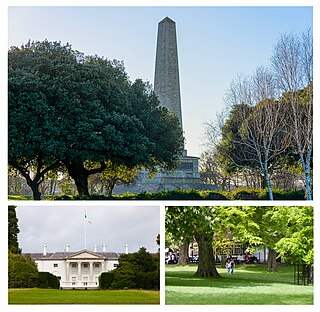
The Phoenix Park is a large urban park in Dublin, Ireland, lying 2–4 kilometres (1.2–2.5 mi) west of the city centre, north of the River Liffey. Its 11 kilometres (6.8 mi) perimeter wall encloses 707 hectares of recreational space. It includes large areas of grassland and tree-lined avenues, and since the 17th century has been home to a herd of wild fallow deer. The Irish Government is lobbying UNESCO to have the park designated as a World Heritage Site.
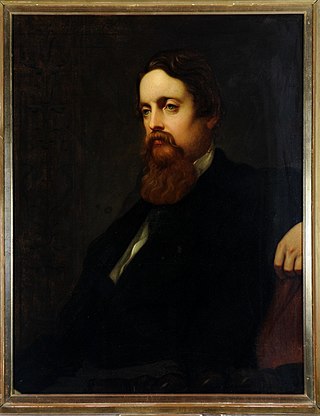
Lord Frederick Charles Cavendish was an English Liberal politician and protégé of the Prime Minister, William Ewart Gladstone. Cavendish was appointed Chief Secretary for Ireland in May 1882 but was killed along with Thomas Henry Burke in what came to be known as the Phoenix Park Murders only hours after his arrival in Dublin, a victim of the Irish National Invincibles organisation.

Kilmainham Gaol is a former prison in Kilmainham, Dublin, Ireland. It is now a museum run by the Office of Public Works, an agency of the Government of Ireland. Many Irish revolutionaries, including the leaders of the 1916 Easter Rising, were imprisoned and executed in the prison by the orders of the UK Government.

The Phoenix Park Murders were the fatal stabbings of Lord Frederick Cavendish and Thomas Henry Burke in Phoenix Park, Dublin, Ireland, on 6 May 1882. Cavendish was the newly appointed Chief Secretary for Ireland and Burke was the Permanent Under-Secretary, the most senior Irish civil servant. The assassination was carried out by members of a republican organisation known as the Irish National Invincibles, a more radical breakaway from the Irish Republican Brotherhood.

William Marwood was a British state hangman. He developed the technique of hanging known as the "long drop".
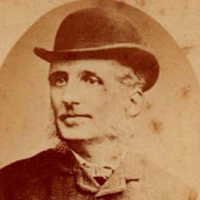
Thomas Henry Burke was an Irish civil servant who served as Permanent Under Secretary at the Irish Office for many years before being assassinated during the Phoenix Park Murders on Saturday 6 May 1882. The assassination was carried out by an Irish republican organisation known as the Irish National Invincibles.

The Kilmainham Treaty was an informal agreement reached in May 1882 between Liberal British prime minister William Ewart Gladstone and the Irish nationalist leader Charles Stewart Parnell. Whilst in gaol, Parnell moved in April 1882 to make a deal with the government, negotiated through Captain William O'Shea MP. The government would settle the "rent arrears" question allowing 100,000 tenants to appeal for fair rent before the land courts. Parnell promised to use his good offices to quell the violence and to co-operate cordially for the future with the Liberal Party in forwarding Liberal principles and measures of general reform. Gladstone released the prisoner and the agreement was a major triumph for Irish nationalism as it won abatement for tenant rent-arrears from the Government at the height of the Land War.
The Parnell Commission, officially Special Commission on Parnellism and Crime, was a judicial inquiry in the late 1880s into allegations of crimes by Irish parliamentarian Charles Stewart Parnell which resulted in his vindication.
Events from the year 1882 in Ireland.

Patrick O'Donnell was an Irish republican executed for the murder of James Carey, whose testimony for the prosecution led to the executions of five men adjudged responsible for the Phoenix Park Murders. O'Donnell was from Gweedore, County Donegal.
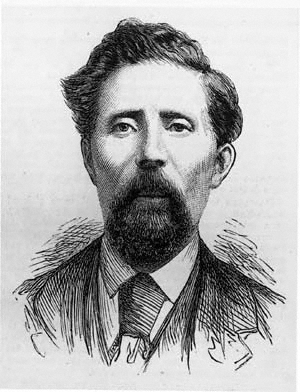
James Carey (1845–1883) was a Fenian, most notable for his involvement in the Phoenix Park Murders. He has been called "the most militant-minded republican you could possibly meet" by historian Dr Shane Kenna.
"Monto " is an Irish folk song, written in 1958 by George Desmond Hodnett, music critic of the Irish Times, and popularised by the Dubliners. Frank Harte was also known to sing the song.
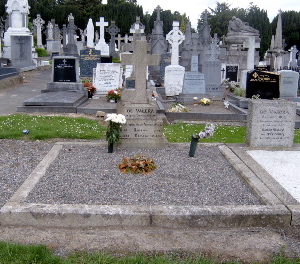
This is a list of notable people buried in Glasnevin Cemetery.
Magdalen Kirwan was a member of the Sisters of Mercy and manager of Goldenbridge penal refuge.

Senan Molony is an author as well as the Irish Daily Mail's Political Editor. He was formerly Deputy Political Editor for the Irish Independent. He broke the news of politician Michael Healy-Rae's Celebrities go Wild voting scandal, receiving the award for Scoop of the Year at the National Newspapers of Ireland's Journalism Awards. He also covered the Aengus Ó Snodaigh printer cartridge scandal.
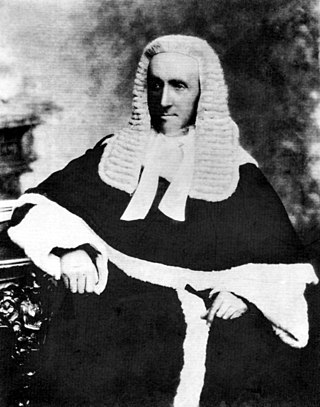
William O'Brien (1832–1899) was an Irish judge. He is mainly remembered now for presiding at the trials which resulted from the Phoenix Park murders. He was also a noted bibliophile, who created one of Ireland's most valuable collections of antiquarian books.

Madeleine ffrench-Mullen was an Irish revolutionary and labour activist who took part in the Easter Rising in Dublin in 1916.

James Fitzharris nicknamed Skin-the-Goat was a member of the Invincibles, a Dublin-based Irish revolutionary group.

Frank Byrne (1848–1894) was an instigator of the Irish National Invincibles, the radical offshoot of the Irish Republican Brotherhood. He was implicated, if not as the organiser, then at least as the spirit behind the assassinations of Lord Frederick Cavendish and Under Secretary Thomas Henry Burke in the Phoenix Park murders of 6 May 1882. He was one of only two who managed to flee Ireland to escape prosecution for the crime. His escape was the source of much legal wrangling in Ireland, France, and the United States.

Mary Ann Byrne was an Irish nationalist.
















